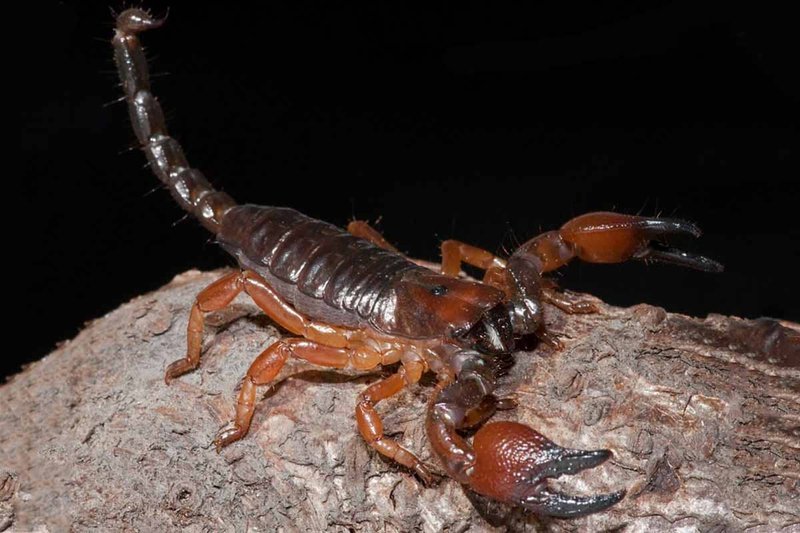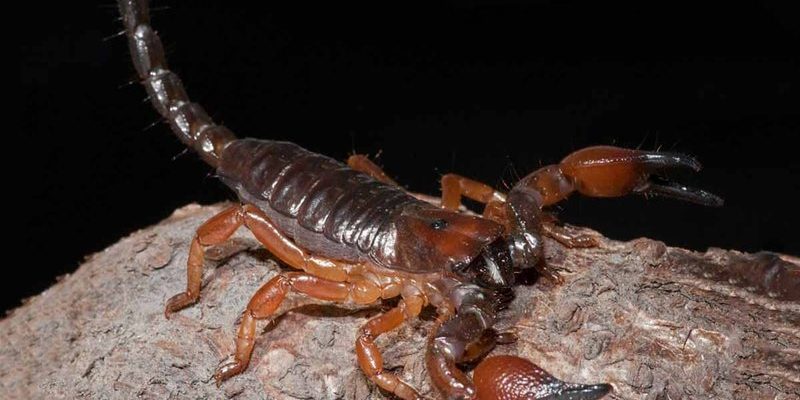
Raising a Red Claw Scorpion is like stepping into a mini-wildlife adventure. It’s not just about having an exotic pet; it’s about fostering a connection with an ancient species. If you’re a beginner, don’t sweat it! I’ll walk you through the essentials, so you can provide a safe and stimulating environment for your new eight-legged friend.
Understanding the Red Claw Scorpion
The Red Claw Scorpion, scientifically known as *Heterometrus spinifer*, is native to Southeast Asia. These scorpions can be recognized by their impressive pincers, which are often a deep red color—hence the name. They can grow up to 6–8 inches long and have a robust body covered in a shiny exoskeleton. What’s really cool about this species is their calm demeanor; they’re less likely to sting than other scorpions under normal circumstances.
Here’s the thing, though: even though they can be friendly and are often kept as pets, they still carry venom. While it’s not deadly to humans, a sting can cause pain, redness, and swelling. So, it’s crucial to handle them with care. Whether you’re looking to observe their behavior or simply enjoy their beauty, understanding how they act in their natural habitat can help you replicate that at home.
Creating the Ideal Habitat
When setting up a home for your Red Claw Scorpion, think of it as crafting a small oasis that mimics their natural environment. They thrive in a humid and warm setting, so you need to maintain specific conditions. A 20-gallon tank is usually sufficient for one or two scorpions. Start by adding substrate—sand or coconut fiber works best—about 3–4 inches deep to allow for burrowing, which they love to do.
You’ll also want to incorporate some hiding places. Consider using pieces of bark, rocks, or even commercially available hides. Scorpions are nocturnal creatures, and having places to retreat during the day will make them feel secure. An important part of their habitat is the temperature and humidity; aim for 75°F to 85°F with humidity levels around 70–80%. A simple hygrometer and thermometer can help you monitor these conditions.
Lighting and Heating
Lighting is essential, but you don’t need bright lights; scorpions prefer dim environments. A simple heat lamp placed at one end of the tank will create a temperature gradient. This way, your scorpion can choose how warm or cool it wants to be. Just make sure there’s a cooler area for them to retreat to!
As for humidity, regularly misting the substrate will help maintain moisture levels. You might want to invest in a small water dish for drinking as well; change the water frequently to prevent bacteria growth.
Feeding Your Red Claw Scorpion
Now, let’s chat about what these little guys eat. In the wild, Red Claw Scorpions are opportunistic predators. They typically hunt insects like crickets, roaches, and mealworms. Providing a varied diet is crucial for their health and vitality.
You might want to start with crickets since they’re widely available at pet stores and easy to maintain. Ensure the crickets are gut-loaded before feeding them to your scorpion—this means feeding the crickets nutritious food so your scorpion gets the best benefits. Offering a few crickets every few days should keep your scorpion happy.
It’s also important to ensure your scorpion has access to plenty of water, but be careful not to overdo it. You don’t want the substrate to become soggy. A light misting or a shallow water dish that they can easily access will do the trick.
Feeding Schedule
Establishing a feeding schedule can keep your scorpion healthy and happy. A good rule of thumb is to feed them every 3–5 days, depending on their age and size. Young scorpions will need more frequent meals, while adults can go longer between feedings. Just keep an eye on their weight and behavior; you’ll get to know your scorpion’s needs over time!
Handling and Interacting with Your Scorpion
Handling a scorpion can be a bit daunting, but it can also be rewarding once you get the hang of it. For a beginner, I recommend waiting at least a few weeks after bringing your scorpion home before attempting to handle it. This gives them time to acclimate to their new environment.
When you’re ready to handle them, make sure you’re calm and confident; scorpions can sense stress. Using a pair of soft tongs, gently coax your scorpion onto your hand. Remember, practice makes perfect, and it’s okay if this takes time. You might even find that your scorpion has a unique personality! They can be curious and even brave once they get used to you.
Signs of Stress or Health Issues
It’s essential to watch your scorpion for any signs of stress or illness. If your pet is hiding more than usual, not eating, or showing unusual behavior, it may be worth investigating. Changes in your environment might be affecting them, or they could be experiencing health problems. Always maintain the proper habitat conditions and consult a vet who specializes in exotic pets if you have concerns.
Common Problems and Solutions
Even with proper care, you may run into some common issues while keeping a Red Claw Scorpion. Here are a few potential problems and some straightforward solutions.
Mold Growth in the Habitat: High humidity levels can sometimes lead to mold. If you notice this, reduce misting frequency and ensure good ventilation in the tank.
Refusal to Eat: If your scorpion suddenly stops eating, check the temperature and humidity levels. Stress from being moved, incorrect habitat conditions, or even the presence of other pets can affect their appetite.
Excessive Hiding: While scorpions love to hide, an overly shy scorpion may be stressed or uncomfortable. Ensure that your habitat is well-balanced—fortify the hiding places but also provide open space for exploration.
When to Seek Help
If you’re ever in doubt about your scorpion’s health, don’t hesitate to reach out to a vet who specializes in exotic pets. They can provide tailored advice that might save you from potential issues down the line.
Keeping a Red Claw Scorpion as a pet can be a thrilling and educational experience. By providing the right habitat, diet, and care, you’re setting the stage for a happy, healthy scorpion. It might seem overwhelming at first, but remember that you’re creating a little ecosystem in your home.
So, whether you’re mesmerized by their movements or curious about their life cycle, you’re in for a treat watching your scorpion flourish. Just take it one step at a time, and you’ll both adapt and grow together. Happy scorpion keeping!

